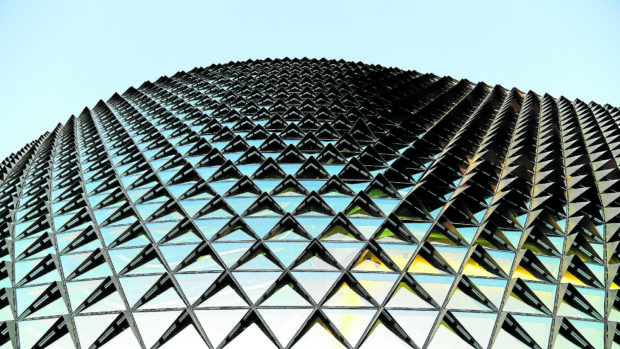The eventful year of 2020 is finally ending. And as we approach 2021, builders, designers and developers are surely off to a treat, thanks to these emerging building technologies for the coming year.

Everything modular
Did you know that construction projects can be completed faster—around 20 to 50 percent—by simply shifting to modular building materials? Aside from efficiency, modular practice may solve the shortage of hourly craft workers. Today’s firms are now resorting to modular and prefabricated construction techniques. By 2021, expect countries like Australia, Singapore, UK, and the United States (West Coast) to be the hotspots of modular construction due to its sensibilities and the lack of affordable labor supply.

Smart glass windows
It is not uncommon to see glass walls enveloping modern buildings. In 2021, we may witness the rise of smart glass—an innovative material that intensifies lighting benefits by incorporating adaptive heating properties in glass. For example, smart glass may turn translucent during the summer to block direct heat, which will eventually relieve airconditioning loads. That same smart glass may revert into transparent visibility to maximize limited sunlight during cloudy days.
Machines communicating with each other
With the ongoing popularity of the Internet of Things (IoT), almost any device can get connected with another. As these machines and devices automatically communicate, 24/7 human micro-management may no longer be as common. These smart technologies can help monitor project progress to maximize construction efficiency and promote better site safety.

Electrified equipment
Did you know that electrified equipment and devices can minimize carbon emissions by as much as 95 percent? At present, there are 15,325 electric commercial vehicles set for order and deployment, although the US seems to have the highest percentage of orders. There is even a strong business case for electric battery adoption in heavy machinery and equipment as well.

Rise of drones
Individuals, commercial entities and governments are slowly realizing the potential of drone evolution—from aerial photography to military rescue. In the construction industry, drones can greatly improve visibility despite limited access. Construction professionals and site inspectors may be able to monitor progress and issues from various angles.

Renewable biofuels
Renewable fuel sources, such as those derived from biomass, are now being eyed more to power construction machines rather than diesel. Biofuels speak of the future. By shifting to renewable biofuels, the world can finally enjoy lower carbon footprint and the many economic benefits that go with its usage. So, expect aggressive industry explorations on biofuel power plant developments in the Philippines soon.
Augmented and Virtual Reality
2021 is seen as the year when the potential of augmented and virtual reality as a means of promoting project visions will be realized. Aside from architectural concepts, augmented and virtual reality can also revolutionize the construction industry via remote control. For example, a Chinese company successfully demonstrated the operation of machinery being controlled by a person from afar.

3D materials are more common than you think
We have mentioned how modular construction will thrive in the year 2021. However, 3D printed materials in building construction can be just as popular. Automated, fast and accurate, 3D printed models are made from computer-aided processes from design to actual material printing.
Increased worker safety with smart devices
While local building codes exist to protect both workers and future tenants, firms are now branching out to smarter construction gear such as wearable trackers and smart work boots with built-in sensors, among others. Apart from promoting safety, these smart construction gears allow supervisors to easily track the motion and location of each team member for instant monitoring and site safety. After all, despite the emerging trends on construction materials and techniques in 2021, they all boil down to achieving a future of safe, efficient and smarter communities.
The author manages his own architectural and technology studio, helping local and international clients design and develop a unique architecture for the future of residences, hotels, condominium towers, museums, commercial and mixed-use township developments with a pursuit for the meta-modern in the next Philippine urban landscape.
#realestateblogph | #realestateblogphpropertynews | #REBPH | #realestate | #buildingtechnologies | #propertytechnologies
Article and Photo originally posted by Inquirer last December 26, 2020 4:10am and written by Ar. John Ian Lee Fulgar. Minor edits have been made by REBPH to cater to its own readers.







More Stories
Vista Land Celebrates 50 Years with Sandiwa: An Event Honoring Leadership, Legacy, and the Filipino Dream of Homeownership
Vista Land Celebrates Love Month in Ilocos Region
Vista Land Bridges Cebuano Heritage and Progress with Valencia by Vista Estates